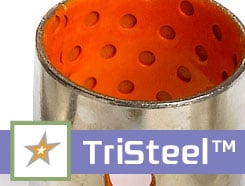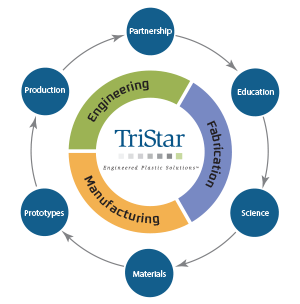1 min read
Reinforced Plane Bearings: The Pros and Cons of Different Liners
![]() Dave Biering
September 3, 2013
Dave Biering
September 3, 2013
 In our last post we reviewed the key questions to ask when selecting a liner material for reinforced bearings. Ultimately, the final selection will depend on the exact parameters of your application (load, speed and temperature), and we also recommend that you review the size and shape, plus cost and machinability of your material.
In our last post we reviewed the key questions to ask when selecting a liner material for reinforced bearings. Ultimately, the final selection will depend on the exact parameters of your application (load, speed and temperature), and we also recommend that you review the size and shape, plus cost and machinability of your material.
When you’ve evaluated all of these factors, here are some liner option to consider, and common uses of each:
PT
Low friction, high PV, high speed, no lubrication required, high-operating temperature. An enhanced-wear PTFE liner for use in lubricated and dry environments. With lubrication, PV ratings can exceed 1,000,000.
Uses: Material handling, agriculture, and hydraulics. The PTS version is lead-free for use in food-grade applications.
AC
Good for use in lubricated or dry environments, and offers high PV. With lubrication, PV ratings can be met without limitations. Lubrication reservoirs are available on the liner to produce a constant storage and pumping action for better hydrodynamic film generation.
Uses: mining equipment, chassis components
PE
Operates with or without lubrication, high PV, and high temperature. With lubrication, PV ratings can exceed 1,000,000. Lubrication reservoirs are available to produce a constant storage and pumping action for better hydrodynamic film generation; reservoirs unnecessary in dry applications.
Uses: chemical pumps and valve bushings
PR and P4
Good for high-speed reciprocating, self-lubricating, high-temperature and high-load applications. Liner is designed specifically for high-frequency dither applications.
Uses: valves, shock absorbers, hydraulic controls – both lubricated and dry
AT
High-PV and high-speed applications, and this liner will run with zero lubrication. Liner thickness allows for secondary machining to accommodate misalignment.
Uses: ski lift chair clip bearings, lift and tilt on medium-speed and mid-load applications.
TriSteel reinforced bearings are metal-backed and contain various self-lubricating liner materials that are sintered to the substrate for longer wear. Read about our newest variation, TriSteel P4.
Interested in learning more about reinforced bearings? Submit your design specs or request a quote!








